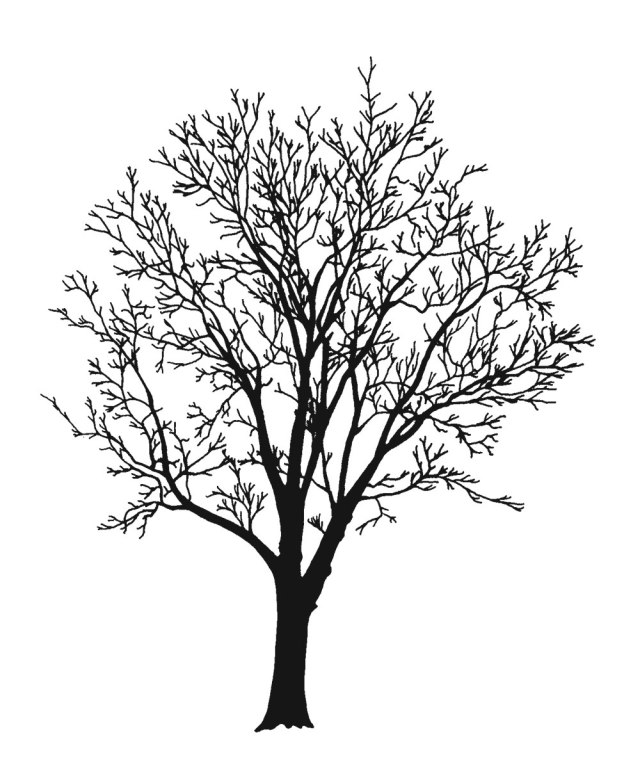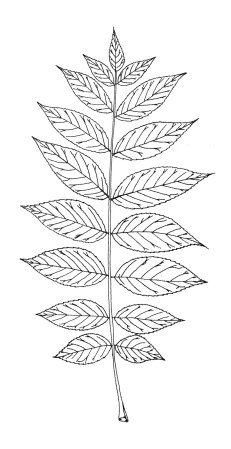
This is an excerpt from “With the Grain: A Craftsman’s Guide to Understanding Wood” by Christian Becksvoort.

The walnut family also includes butternut and the hickories. Juglans means nut of Jupiter, nigra, or black, refers to the dark wood. Its natural range is from New England through southern Ontario to South Dakota, south to Texas, and east to northern Florida. Walnuts grow best in the deep rich soils of river valleys and bottom lands, where they reach a height of 60′-100′ (18-30 m). The tree generally has an open crown with thick, sturdy branches. Walnut leaves are compound, 1′-2′ (30-60 cm) long, with 13-23 lance-shaped leaflets. Leaves grow alternately on thick, stubby twigs. When cut, the twigs reveal a light brown pith, about the thickness of a pencil lead. Overall, the light green foliage is scant, giving the tree an airy appearance. Early in the fall the leaves turn yellow and drop, leaving a distinctive 3-lobed, notched, leaf scar. The nut matures at about the same time, enclosed in a thick, green, pulpy husk about the size of a billiard ball. The deeply grooved black nut is very thick and hard, but well worth the effort of extracting the meat. The dark brown bark grows in broken, crossed ridges.

Black walnut is as close to a perfect cabinet wood as can be found in North America. The light sapwood, 10-20 rings wide, is often steamed commercially to make it blend with the heartwood, which is a medium chocolate to purplish-brown. The wood is medium hard (with a density of 38 lb/ft³ or .61 g/cc at 12 percent MC), strong and works well with both hand and power tools. Classified as semi-ring-porous the vessels (containing tyloses) are large enough to be seen on any surface. Walnut is very decay-resistant, and was once used for railroad ties. Many early barns, houses and outbuildings in the Appalachians and the Midwest were constructed with walnut frames. Its color, beauty and workability make it a prime cabinet wood. Gunsmiths use it for stocks because it moves very little once dried. Top-quality veneer logs will sell for thousands of dollars and will panel miles of executive offices.
— MB